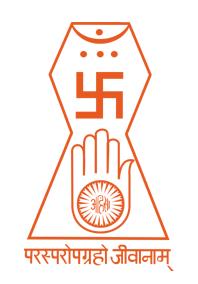Tuesday, December 11, 2012
Tuesday, December 4, 2012
Word Roots and Wandering Minds
So, we were sitting in class watching a documentary about the holocaust and the word Aryan was used several times.
Etymologically speaking, the word is an English language loan word from the Sanskrit that means "noble".
Today, if you hear the word at all, it tends to be used academically to indicate a relation to the Indic languages and their speakers. Use of Indo-Iranian and Indo European have reduced the call for Indo-Aryan, even though all three are frequently tied into the Proto-Indo-European (PIE) language root family.
In a religious sense, it means an individual who has mastered the four noble truths and has entered upon the spiritual path.
So why did the Nazis decide to use it?
Because of a guy named Arthur De Gobineau, who postulated that the world broke down into three races-- white, black and yellow-- and the rest was a result of racial miscegenation. From here, it wasn't much of a stretch to tie Aryan to the Irish Eire. That, combined with the writings of several prominent linguists and anthropologists of the time turned into the theory that the Aryan race arose from somewhere in Northern Europe. Because the "Nordic peoples" were possessed of the "purest" appearance, it was believed that they were the originators of the white race and as such deserving of the Aryan stamp.
So. There's that.
Oddly enough, the Swastika? Also an Indic symbol, though the meaning is a bit more wholesome.Hindus, Jains and Buddhists all encorporate the symbol, though none as prominently as the Jains.
Hindus hold the symbol as a representation of Ganesha, while Buddhists hold the symbol as a graphic representation of eternity.
Among Jains, the symbol remains popular, and is featured on both their flag and their main religious symbol.
This symbol, chosen in 1974, features the swastika prominently, but their interpretation is that:
the four arms of the Swastika symbolize the four Gati (destiny): Narak (demon),
Triyanch (animal), Manushya (human) and Dev (angel). It represents the perpetual
nature of the universe in the Madhya Lok (material world), where a creature is
destined to one of those states based on their Karma (deeds). It also represents the
four columns of the Jain Sangh: Sadhus, Sadhvis, Shravaks and Shravikas - monks,
nuns, female and male laymen. It also represents the four characteristics of the soul:
infinite knowledge (Anant Jnan), infinite perception (Anant Darshan), infinite
happiness (Anant Sukh), and infinite energy (Anant Virya).
Who'd have though there'd be so much to a word?
Well, besides me?
Etymologically speaking, the word is an English language loan word from the Sanskrit that means "noble".
Today, if you hear the word at all, it tends to be used academically to indicate a relation to the Indic languages and their speakers. Use of Indo-Iranian and Indo European have reduced the call for Indo-Aryan, even though all three are frequently tied into the Proto-Indo-European (PIE) language root family.
In a religious sense, it means an individual who has mastered the four noble truths and has entered upon the spiritual path.
So why did the Nazis decide to use it?
Because of a guy named Arthur De Gobineau, who postulated that the world broke down into three races-- white, black and yellow-- and the rest was a result of racial miscegenation. From here, it wasn't much of a stretch to tie Aryan to the Irish Eire. That, combined with the writings of several prominent linguists and anthropologists of the time turned into the theory that the Aryan race arose from somewhere in Northern Europe. Because the "Nordic peoples" were possessed of the "purest" appearance, it was believed that they were the originators of the white race and as such deserving of the Aryan stamp.
So. There's that.
Oddly enough, the Swastika? Also an Indic symbol, though the meaning is a bit more wholesome.Hindus, Jains and Buddhists all encorporate the symbol, though none as prominently as the Jains.
Hindus hold the symbol as a representation of Ganesha, while Buddhists hold the symbol as a graphic representation of eternity.
Among Jains, the symbol remains popular, and is featured on both their flag and their main religious symbol.
This symbol, chosen in 1974, features the swastika prominently, but their interpretation is that:
the four arms of the Swastika symbolize the four Gati (destiny): Narak (demon),
Triyanch (animal), Manushya (human) and Dev (angel). It represents the perpetual
nature of the universe in the Madhya Lok (material world), where a creature is
destined to one of those states based on their Karma (deeds). It also represents the
four columns of the Jain Sangh: Sadhus, Sadhvis, Shravaks and Shravikas - monks,
nuns, female and male laymen. It also represents the four characteristics of the soul:
infinite knowledge (Anant Jnan), infinite perception (Anant Darshan), infinite
happiness (Anant Sukh), and infinite energy (Anant Virya).
Who'd have though there'd be so much to a word?
Well, besides me?
Subscribe to:
Posts (Atom)
